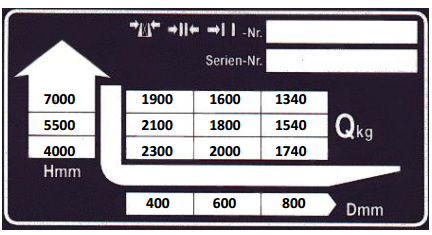Overload Control for Internal Forklift Trucks
Forklift truck is widely used in many industries, primarily to move materials. They are able to raise, lower, or remove large objects or pieces of small objects in pallets or boxes. Forklift drivers must be certified by taking the training course in order to guarantee the safety operations. However, accidents happen frequently due to irrational operation of drivers which lead to economic loss or even human dies. Thus, a reliable device is urgently needed to secure safe working conditions.

Background and problem definition
Each fork and forklift truck is characterized by a so called load diagram, which is show in the picture. The load diagram is designed for two purposes: maintain and control lift truck stability; avoid fatigue of the fork. In practice, the maximum lifting capacity is limited by the lifting height of the forks and the position of the load on the forks which is also known as the load center point. When a forklift’s load exceeds its capacity limitation, unstable conditions are introduced which may cause the truck to tip over. In practice, the truck driver has no information regarding either the weight on the forks and the exact load center point and height. Thus, no warning indicator is available for drivers to adjust their operations to prevent overload situation from happening.
Research goals/Objectives
The goal of the project is to provide a concept design of a reliable overload control system for internal transport forklift trucks. The system should be able to monitor the complete load diagram electronically and should provide accurate and real-time feedback to the truck driver when an overload condition is likely to happen. Moreover, the presented design should be a genetic solution which could be implemented on any truck type and in combination with any types of fork lift attachment.
Research Approach
A survey of sensor measurement technologies will be conducted to find how load center point could be measured either directly or indirectly. The measured signals will be processed by an intelligent module to fit the input value into load diagram. Given the load center point measurement and height of the load, the load diagram can be monitored electronically and a warning system is used to provide overload indications to the driver.
Funding
The project is initiated and funded by RAVAS Europe B.V, the Netherlands.